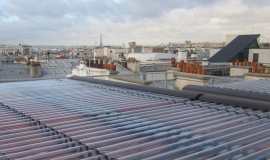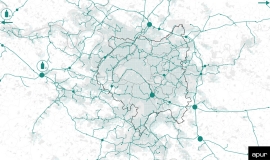
The metropolitan electricity distribution network is made up of a number of very high voltage cables (225 kV and 400 kV), which are both overhead and underground and are essential, given the metropolis’ high dependence on neighbouring regions for its electricity supply. Among these lines, those of 400 kV, as well as a group of 225 kV lines identified with regard to the impact their malfunctioning would have on maintaining the electrical supply, are essential to guarantee that the network functions correctly: they form the “strategic network” and are, as such, subject to specific regulatory provisions in the Ile-de-France Regional Master Plan (SDRIF).
The metropolitan electricity distribution network carries power from French production sites (nuclear, hydroelectric power plants, large-scale wind farms, etc.) located in neighbouring regions (Normandy, Centre, Grand Est, Hauts-de-France). The metropolitan electrical power supply is based on a high and very high voltage network which architecturally forms a “loop”. The first ring of 400,000 volts feeds a second ring of 225,000 volts after passing through a dozen or so intermediary transformer stations. This second ring then feeds electricity supply substations, notably those located in the centre of Paris, passing through intermediary 225,000 volts “penetrators”. Finally, the 131 electrical source substations in Grand Paris Metropolis (98 substations of 225kV and 33 substations of 63 kV) provide the link between the various different transmission lines and the electricity distribution network.



